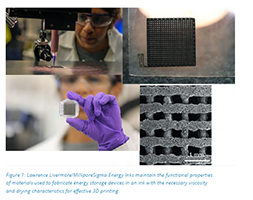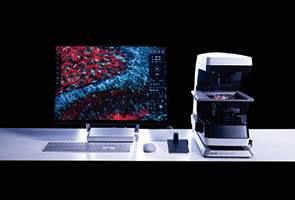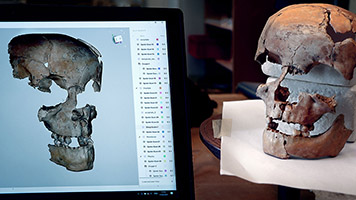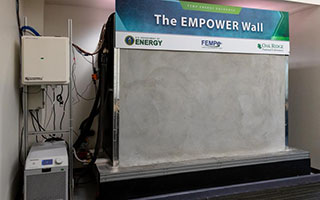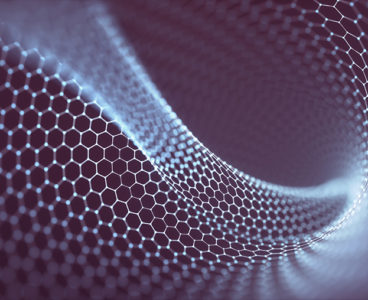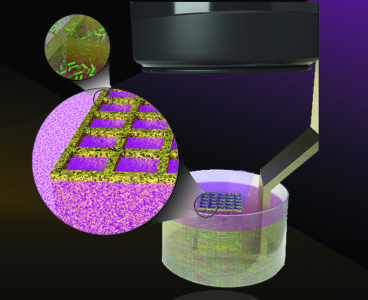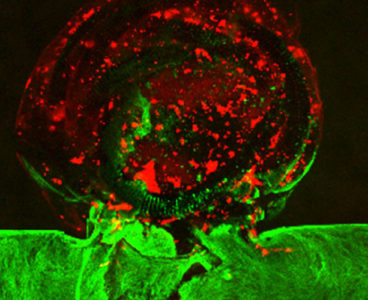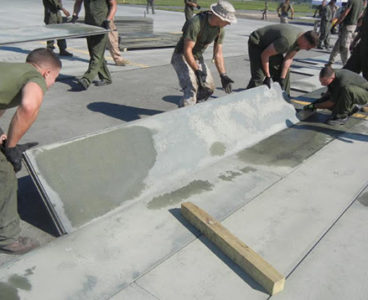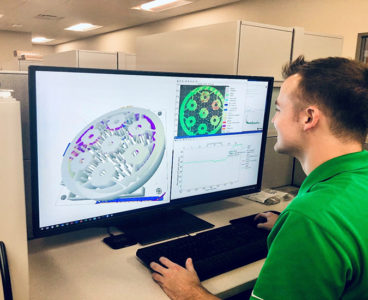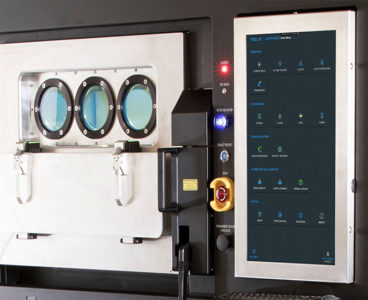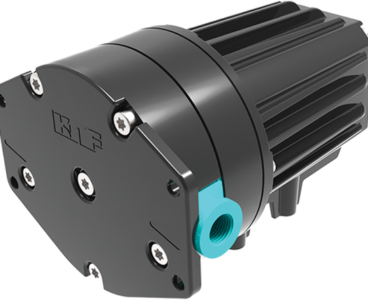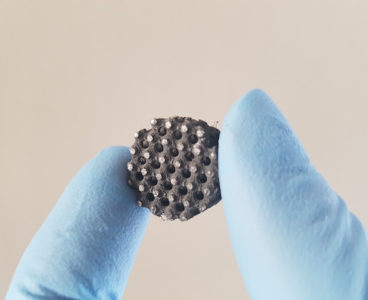Energy Inks, 3D-printing feedstock inks developed by Lawrence Livermore National Laboratory (LLNL) and introduced to the market in three formulations by partner and co-developer MilliporeSigma, offer functional properties, enabling next-generation, high-performance, 3D-printed devices for energy storage, catalysis, filtration, sensors and more. Further, these devices can be 3D-printed faster, at a lower cost, and exhibit higher…
R&D 100 winner of the day: Quantum X bio
Developer: BICO Group Co-developer: Nanoscribe Quantum X bio is the first-of-its-kind bioprinter enabling submicron 3D printing resolution. The bioprinter offers essential features such as precise temperature control, a sterile environment, and functionalized biomaterials that unlock a new level of bioprinting and effectively accelerate innovation in key applications such as tissue engineering, cell biology, and the…
How 3D technology creates digital twins to protect historical and cultural heritage
By Andrei Vakulenko, CBDO, Artec 3D Cultural heritage is an invaluable resource and a cultural legacy of a nation, community, and country. However, increasingly, many historical landmarks and artifacts are at risk of being lost from natural disasters, human activity, and conflict. Those trying to protect and preserve sites and artifacts often work in dangerous…
3D-printed metal parts go hypersonic — at zero miles per hour
The term “hypersonics” is getting renewed attention these days, with the release of a U.S. government report about unidentified aerial phenomena (UAPs) with “impossible” flight behavior — at speeds exceeding the critical Mach 5 level that defines the word. Whether you believe it’s extraterrestrials, competitor nations or domestic R&D (or maybe all of the above?)…
3D-printed smart wall a cool idea
From Oak Ridge National Laboratory Oak Ridge National Laboratory researchers demonstrated that cooling cost savings could be achieved with a 3D printed concrete smart wall following a three-month field test. The team used data from the 5 x 8-ft wall installed in an ORNL conference room and predictive modeling to estimate performance in the Southeastern…
LLNL optimizes flow-through electrodes for electrochemical reactors with 3D printing
By Jeremy Thomas, LLNL To take advantage of the growing abundance and cheaper costs of renewable energy, Lawrence Livermore National Laboratory (LLNL) scientists and engineers are 3D printing flow-through electrodes (FTEs), core components of electrochemical reactors used for converting CO2 and other molecules to useful products. As described in a paper published by the Proceedings…
Taking cues from nature, breakthrough ‘cellular fluidics’ technology could have sweeping impacts
From Lawrence National Livermore Laboratory Inspired by the way plants absorb and distribute water and nutrients, Lawrence Livermore National Laboratory researchers have developed a groundbreaking method for transporting liquids and gases using 3D-printed lattice design and capillary action phenomena. In a paper published today in Nature and featured on the publication’s cover, LLNL researchers describe…
Printable Purdue biosensor simultaneously records, makes images of tissues and organs
By Steve Martin, Purdue Surgeons may soon be able to localize critical regions in tissues and organs during a surgical operation thanks to a new, patent-pending Purdue University biosensor that can be printed in 3D using an automated printing system. Chi Hwan Lee created the biosensor, which allows for simultaneous recording and imaging of tissues…
Can artificial intelligence open new doors for materials discovery?
By Dave Bukey The future of clean energy is hot. Temperatures hit 800° C in parts of solar energy plants and advanced nuclear reactors. Finding materials that can stand that type of heat is tough. So experts look to Mark Messner for answers. A principal mechanical engineer at the U.S. Department of Energy’s (DOE) Argonne…
Argonne offering webinar: “Materials for printed hybrid electronics”
U.S. Dept. of Energy’s Argonne National Laboratory is presenting “Materials for Printed Hybrid Electronics.” a free webinar in the “Frontiers in Materials Manufacturing” webinar series, Wednesday, May 19, 2021 • 1:00 – 3:00 p.m. CT (2 – 4 p.m. E.T.) Advancements in material and device fabrication technologies have enabled the proliferation of low-cost, low-power, printed…
3D-printed microbes open door to enhanced performance of biomaterials
Lawrence Livermore National Laboratory scientists have developed a new method for 3D printing living microbes in controlled patterns, expanding the potential for using engineered bacteria to recover rare-earth metals, clean wastewater, detect uranium and more. Through a novel technique that uses light and bacteria-infused resin to produce 3D-patterned microbes, the research team successfully printed artificial…
R&D 100 winner of the day: HP Jet Fusion 5200 Series 3D Printing Solution
3D printing has been around for decades, with a lot of hype around its potential but has remained mainly in the prototyping space. The HP Jet Fusion 5200 Series 3D Printing Solution, from HP 3D Printing, brings 3D printing quality and productivity to a level that rivals or can be easily combined with traditional manufacturing.…
New tailored composition 3D-printed glass enhances optical design flexibility
LLNL researchers have used multi-material 3D printing to create tailored gradient refractive index glass optics that could make for better military specialized eyewear and virtual reality goggles. The new technique could achieve a variety of conventional and unconventional optical functions in a flat glass component (with no surface curvature), offering new optical design versatility in…
LLNL develops first-ever living, 3D-bioprinted aneurysm to test surgical treatments
Brain aneurysms affect about one in every 50 Americans and can lead to serious medical emergencies, including stroke, brain damage and death if they burst. Existing treatment options are limited, and often invasive, and surgical outcomes can vary widely from person to person. But medical practitioners may be able to improve existing treatment methods and…
SBIR grant fast-tracks 3D-printed runway mat development
By Chris Adam A $1 million SBIR Phase II grant from the U.S. Air Force will help fast-track the development of a new innovative runway mat. Pablo Zavattieri, the Jerry M. and Lynda T. Engelhardt Professor in civil engineering at Purdue University, is working with Indiana Technology and Manufacturing Companies (ITAMCO) to develop the new…
AI software enables real-time 3D printing quality assessment
By Stephanie G Seay Oak Ridge National Laboratory researchers have developed artificial intelligence software for powder bed 3D printers that assesses the quality of parts in real time, without the need for expensive characterization equipment. The software, named Peregrine, supports the advanced manufacturing “digital thread” being developed at ORNL that collects and analyzes data through…
Teens pay it forward, use 3D printers built at Sandia to make face shields
By Manette Fisher Teens who built 3D printers during a weeklong robotics camp at Sandia National Laboratories last year have used them to make more than 3,000 face shields that have been donated to medical professionals and first responders in New Mexico. The camp was hosted by Sandia in collaboration with R4 Creating, a nonprofit…
VELO3D develops process for 3D printing aluminum F357 for thin-walled heat transfer applications
Digital manufacturing innovator VELO3D announced today the commercial release of a manufacturing process for additively manufactured parts in Aluminum F357 on the company’s Sapphire metal 3D printing system. The foundry-grade aluminum alloy, suitable for the laser powder-bed fusion (LPBF) process, enables 3D printing of parts that have traditionally been manufactured using casting practices. There are…
VELO3D raises $28 million in Series D Funding round, paving the way for product expansion
Digital manufacturing innovator VELO3D announced today that it has raised $28 mil in a Series D funding round. New investors Piva and TNSC joined the round, along with existing investors Bessemer Venture Partners, Playground, and Khosla Ventures. This brings VELO3D’s total funding to $138 mil. “With the VELO3D integrated solution of Flow advanced pre-print software,…
VELO3D launches large format, 1-meter-tall, industrial 3D metal printer, with Knust-Godwin as first customer
Digital manufacturer VELO3D announces its plans to launch a next-generation Sapphire industrial 3D metal printer with a vertical axis of one meter. The system will ship in Q4 2020, with precision-tool and component manufacturer Knust-Godwin securing the first order to produce parts for an oil and gas application. “Our vision at VELO3D is to enable…
Integrating electronics onto physical prototypes
MIT researchers have invented a way to integrate “breadboards” — flat platforms widely used for electronics prototyping — directly onto physical products. The aim is to provide a faster, easier way to test circuit functions and user interactions with products such as smart devices and flexible electronics. Breadboards are rectangular boards with arrays of pinholes…
New KNF Low-Pulsation Liquid Diaphragm Pump
With the introduction of new FP 150, KNF further expands its line of next-generation low pulsation liquid diaphragm pumps. This line of products combines the pulsation level previously only achieved by gear pumps with advantages of diaphragm pump technology – self- priming, safe to run dry, and long service life. Pulsation at the nominal flow…
Tough, flexible sensor invented for wearable tech
Researchers have utilized 3D printing and nanotechnology to create a durable, flexible sensor for wearable devices to monitor everything from vital signs to athletic performance. The new technology, developed by engineers at the University of Waterloo, combines silicone rubber with ultra-thin layers of graphene in a material ideal for making wristbands or insoles in running…
Elysium’s solution supports Dassault Systèmes’ 3DEXPERIENCE in the digital supply chain
Elysium, the global interoperability solutions provider, has integrated its advanced suite of software to support realizing MBD/MBE with Dassault Systèmes’ 3DEXPERIENCE platform to aid users in achieving fast, accurate, compliance-checked transfer of data in multi-CAD environments. The new Elysium integration also ensures that customized quality checks, geometry/PMI/attribute validation, and geometry simplification are done automatically within…
Rice bioengineers 3D-print implants to seed multiple layers of tissue
Who ever said bioengineers can’t get their groove on? The Rice University team led by Antonios Mikos says otherwise with its development of a groovy method to seed sophisticated, 3D-printed tissue-engineering scaffolds with living cells to help heal injuries. The researchers are literally carving grooves into plastic threads used to build the scaffolds. The grooves…

